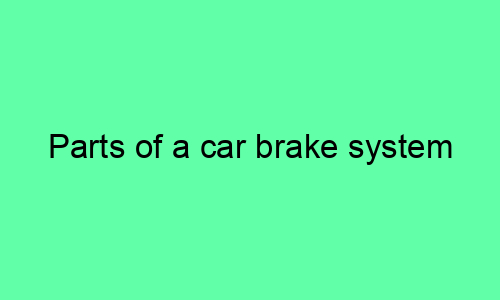Parts of a Car Brake System
Brake Pedal
The brake pedal is the part of the brake system that the driver presses to slow down or stop the car. When the brake pedal is pressed, it activates the master cylinder, which sends brake fluid to the brake lines and brake calipers.
Master Cylinder
The master cylinder is the part of the brake system that converts the mechanical force of the brake pedal into hydraulic pressure. The master cylinder is connected to the brake lines, which carry brake fluid to the brake calipers.
Brake Lines
The brake lines are the part of the brake system that carry brake fluid from the master cylinder to the brake calipers. The brake lines are made of metal or plastic, and they are routed under the car’s body.
Brake Calipers
The brake calipers are the part of the brake system that squeeze the brake pads against the brake rotors. The brake calipers are mounted on the wheel hubs, and they are activated by the brake fluid that is sent from the master cylinder.
Brake Pads
The brake pads are the part of the brake system that create friction against the brake rotors to slow down or stop the car. The brake pads are made of a semi-metallic material, and they are mounted on the brake calipers.
Brake Rotors
The brake rotors are the part of the brake system that the brake pads rub against to create friction. The brake rotors are made of a cast iron or steel material, and they are mounted on the wheel hubs.
Brake Fluid
Brake fluid is the part of the brake system that transmits the force from the master cylinder to the brake calipers. Brake fluid is a hydraulic fluid, and it is made of a glycol-based material.
Brake Booster
The brake booster is the part of the brake system that amplifies the force applied to the brake pedal. The brake booster is connected to the master cylinder, and it is activated by the vacuum created by the engine.
Anti-Lock Braking System (ABS)
The anti-lock braking system (ABS) is the part of the brake system that prevents the wheels from locking up during braking. The ABS is activated by a sensor that detects when the wheels are about to lock up, and it modulates the brake pressure to prevent the wheels from skidding.






